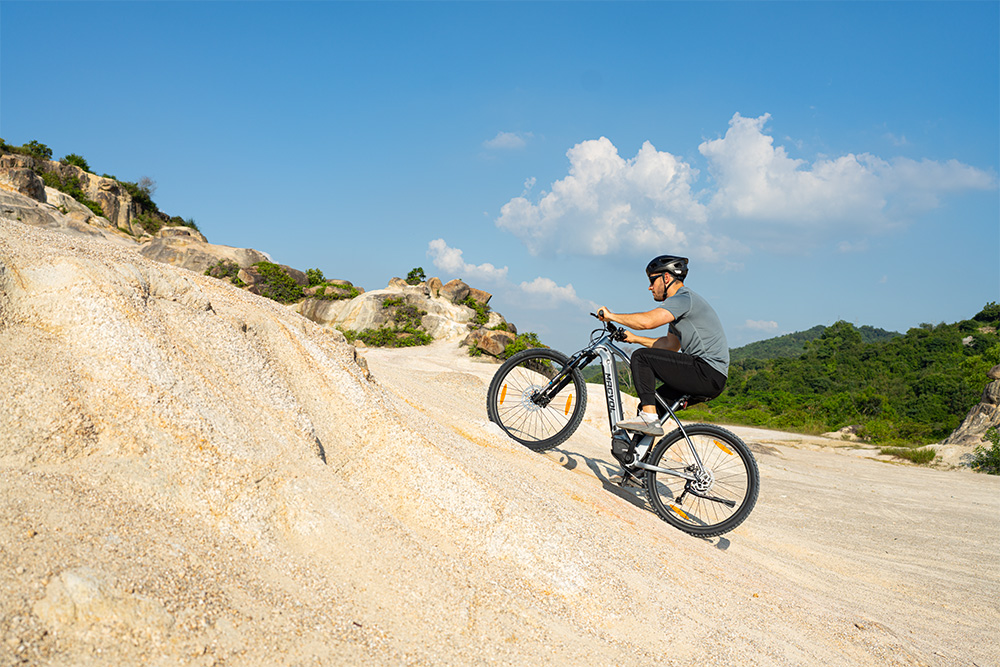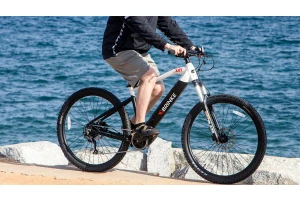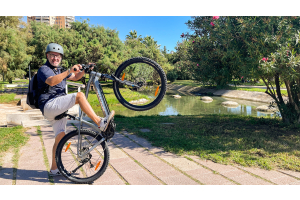July 10, 2024

Things You Need to Know About Cycling (1) - Hill Climbing
Everyone watching the Tour de France can't help but take a look at the intense hill climbing races of the PRO in those steep mountain sections. The number of slopes mentioned in the race commentary is actually the percentage (slope ratio) commonly used for bicycle climbing, not the slope number we talk about in daily life.
Today, let's talk about how slope grades are distinguished.


Definition of slope
When we talk about the topic of slopes, we need to understand some concepts related to "slopes". What is the difference between "degree" and "slope" that we often mention? Although they sound similar, there is actually a big difference between the two.
As shown in the figure, we can describe it as
c-The length of the hypotenuse is considered to be the road surface, which is the part we actually ride on;
b-is the distance traveled horizontally;
a-height is the elevation gained.
The angle corresponding to the a-side is θ in degrees.
Angle: that is, the value of θ in °, with 0° being horizontal and 90° being vertical.
Standard slope, as a/b, the standard definition of slope calculation, expressed in %, 0% of course means horizontal, the standard slope at an angle of 45 ° is 100%, and the standard slope for vertical is infinity.
Approximate slope (average slope): a/c, also expressed in %, when the angle is lower than 20 °, the value is similar to the standard slope. 0% also means horizontal, vertical for 100%. It is the so-called gradient for normal riders.
Usually, because the distance of b is difficult to measure, and the gradient will change a lot due to different road sections and conditions, which leads to a big error in the estimated b value, so the actual riding distance will usually be used as c to project into an approximate gradient (average gradient). The two values will be very close when theta angle is low.
The difference between angle and slope


Usually when we describe the steepness of a slope, we often use [degree] and [slope] to describe it. When we describe how many degrees a slope is, the degree here means the angle (angle = θ value). The unit used is ° (degree).
When we describe the degree of steepness of a surface slope, we usually use the% slope representation instead of the angle representation mentioned earlier. And we often use the average slope instead of the actual standard slope, usually omitting "slope" or "slope ratio" instead. Because the data required to obtain this data is the easiest to obtain, and there is almost no difference between the two at smaller angles, we usually use a ratio of [climb height] and [ride slope length]. That is, [climb height]/[ride slope length] x 100%.
If the slope is 3%, it means that for every 100 meters of horizontal distance, the vertical direction rises (falls) by 3 meters; 1% means that for every 100 meters of horizontal distance, the vertical direction rises (falls) by 1 meter. If the slope is 15%, for every 100 meters of horizontal distance, the vertical direction rises (falls) by 15 meters, but the actual angle is only 8.5 degrees. Therefore, using two different units to represent the numerical difference of the same slope is very different.
Gradation of slope
Knowing how the slope is calculated, UCI will calculate it according to a certain formula ((average slope (%)) ^ (3/2) * altitude climb (meters))/100 , and divide all the slopes into five grades, among which the fourth grade has the lowest slope and the HC grade has the largest slope.
- 4-Level slope ≤ 20: a 5% (2.86 °) slope below 2 km, or a 5 km climb with a 2% -3% (1.145 ° -1.67 °) slope.
- 20 < 3 grade slope ≤ 50: 10% (5.7 °) slope climbing within 1 km, or 5% (2.86 °) gentle slope within 10 km.
- 50 < 2-level slope ≤ 120: 5 km 8% (4.6 °) climb, or 15 km 4% (2.29 °) climb.
- 120 < 1-level slope ≤ 200: 8% (4.6 °) climb for 8 kilometers, or 5% (2.86 °) climb for 20 kilometers.
- HC grade slope > 200: both length and steepness of the climb, more difficult than level 1 climb.
Slope limit
In theory, if the transmission ratio is sufficient, the rider can climb any steep slope as long as he has a high enough cadence, even if the power is small.
However, during the riding process, there is also a problem to consider, which is the balance problem. After testing and calculation, the rider has gradually reduced the contact between the front wheel and the ground when the slope is 86.9% (41 degrees) . In other words, when the slope reaches 40%, the rider and the bicycle have signs of tilting backward.
Professional cyclists have done tests, trying their best to climb a 40% (about 22 degrees) slope at a power of 422 watts and a speed of 7 kilometers per hour, which is roughly the speed of a healthy male brisk walker. If the slope continues to increase, the efficiency of cycling will be far lower than that of walking.
For cycling uphill, as long as the slope is about 12% or more (about an angle of 7 °), riders need to work very hard to step on it. A slope over 20% is already considered a super steep slope, and it is no longer a slope that ordinary riders can ride up casually.
Peak20 - King of Hill Climbing
Peak20 uses Motinova's T1 series mid-mounted motor, which can stably and continuously climb 15 ° slopes, and has been verified to have no problem climbing 20 ° slopes. The T1 series motor can provide 90NM of torque, continuously assisting your riding, allowing you to better enjoy the fun of riding.
Let's climb together on Macvol Peak20.


 Deutsch
Deutsch  Español
Español  Deutsch
Deutsch 



Validate your login